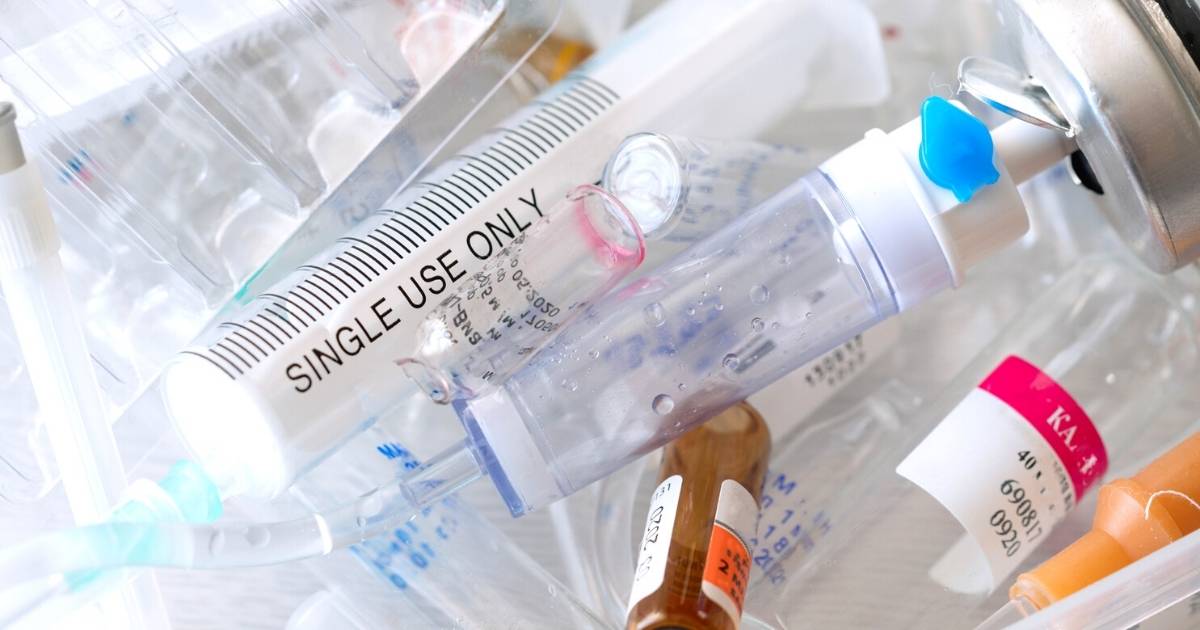Disposal of medical waste is an important aspect to consider in healthcare settings. Improper disposal of medical waste can have far-reaching consequences, so it pays for professionals to not only be aware of what medical waste is, but also understand the consequences of their actions through not correctly disposing of medical waste.
What is medical waste?
Medical waste is any waste generated inside healthcare settings such as dental practices, hospitals, pharmacies and aesthetic clinics. There are different types of medical waste that are split into various categories, depending on the items involved and the substances they have encountered. This categorisation will also impact medical waste removal and treatment in order to limit any potential spread of disease or environmental impact.
In the UK, these categories are as follows:

Clinical Waste
What is clinical waste? There are two types of clinical waste that you will come across in healthcare settings – Clinical Infectious and Clinical Highly Infectious. The main difference between these categorisations is that Clinical Highly Infectious waste is contaminated with Class A pathogens – these are defined as infectious substances that can cause permanent disabilities and fatal diseases upon exposure, such as ebola, HIV and poliovirus (cultures). Examples of clinical waste include PPE such as facemasks, gloves and aprons, as well as sharps that have come into contact with infectious bodily fluids. This waste stream is hazardous and requires incineration in order to comply with medical waste disposal regulations.
On the other hand, Clinical Infectious Waste comprises hazardous and non-
hazardous items that are contaminated with bodily fluids from a person who is, or suspected to be, carrying an infectious disease. Items in this category include items such as gloves, facemasks, disposable aprons and any other items used when treating patients who fall under this criterion.
Safe clinical waste disposal is a top priority as it helps prevent the spread of any infectious diseases.
Medicinal Waste (Pharmaceutical waste)
This waste stream includes any non-hazardous medicines and denatured drugs that do not have cytotoxic/cytostatic properties. Examples include blister packs of pills, tablets in containers, liquid medicine in bottles and droplet bottles.
This waste stream requires incineration as any drugs that are improperly disposed of may come have an impact on humans, wildlife or the environment that come into contact with them.

Offensive (Tiger) Waste
Offensive waste (or Tiger waste) is comprised of any items that are non-hazardous and non-infectious but that may be unsuitable for municipal waste due to their potential to shock. Examples include used nappies, colostomy bags and incontinence pads. These items can be recycled, landfilled or incinerated.
Cytotoxic/Cytostatic Waste
This waste stream is reserved for medicines and drugs that have cytostatic/cytotoxic properties. This also encapsulates any items used to administer these medications or those that have become contaminated with these substances. As such, examples include needles and syringes used after chemotherapy, medicine containers and needles used to administer botulinum toxin.
Anatomical Waste
Anatomical waste contains both hazardous and non-hazardous waste and includes body parts, blood bags and blood preserves. This waste stream is commonly associated with surgical and aesthetic procedures, meaning that it is often found in hospital environments or any setting that performs cosmetic surgery.

Dental Waste
Dental waste is comprised of two different materials – amalgam (commonly used in fillings) and gypsum (often used to create dental models). These materials must be separated from other waste streams as these pose safety risks to both people and the environment.
Mixed Municipal Waste
Mixed municipal waste isn’t unique to healthcare settings and includes the regular waste services that your local council supplies. Examples include paperwork, empty packaging and food receptacles. These may be recycled or sent to landfill.
Protecting people and the planet
Proper medical waste management is important as any medical waste that is not disposed of correctly can be dangerous to humans and the environment alike. Many waste streams could contribute to the spread of disease if not properly segregated, and certain waste streams such as dental waste and medicinal waste can have a significant impact on the environment. Amalgam, for example, is very harmful once it reaches ocean environments and should be prevented from doing so where possible.
Initial Medical makes disposing of medical waste easy with its range of colour coded waste receptacles that follow the Department of Health’s best practice guide to waste disposal. Initial Medical supports this with tailored medical waste collection and management services that are bespoke to your business and fully reflect the unique waste needs of your environment.





Leave a Reply